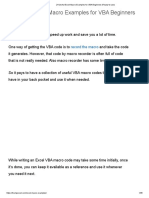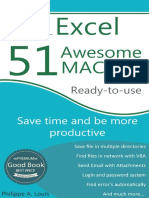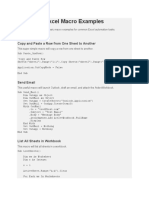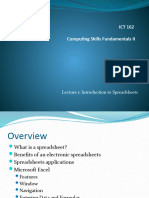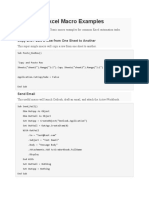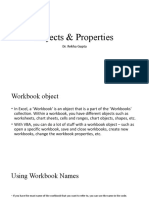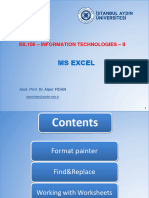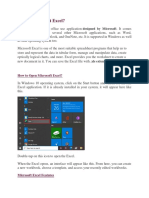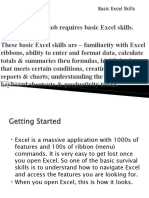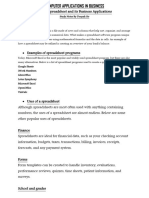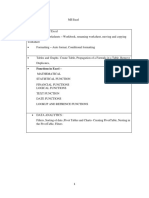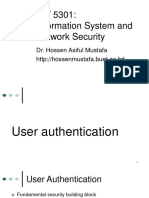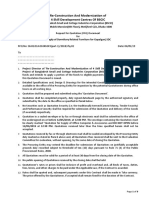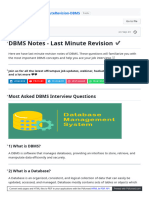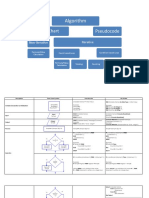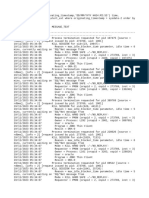0% found this document useful (0 votes)
157 views12 pagesExcel VBA Tips for Power Users
This document provides code examples for common Excel macro tasks like hiding and unhiding worksheets, sorting worksheets, protecting and unprotecting sheets, unmerging cells, saving workbooks with timestamps, saving each worksheet as a PDF, converting formulas to values, protecting cells with formulas, inserting rows, and inserting date/timestamps. Code is provided to perform each of these tasks with a brief description.
Uploaded by
voccubdCopyright
© © All Rights Reserved
We take content rights seriously. If you suspect this is your content, claim it here.
Available Formats
Download as PDF, TXT or read online on Scribd
0% found this document useful (0 votes)
157 views12 pagesExcel VBA Tips for Power Users
This document provides code examples for common Excel macro tasks like hiding and unhiding worksheets, sorting worksheets, protecting and unprotecting sheets, unmerging cells, saving workbooks with timestamps, saving each worksheet as a PDF, converting formulas to values, protecting cells with formulas, inserting rows, and inserting date/timestamps. Code is provided to perform each of these tasks with a brief description.
Uploaded by
voccubdCopyright
© © All Rights Reserved
We take content rights seriously. If you suspect this is your content, claim it here.
Available Formats
Download as PDF, TXT or read online on Scribd
/ 12




